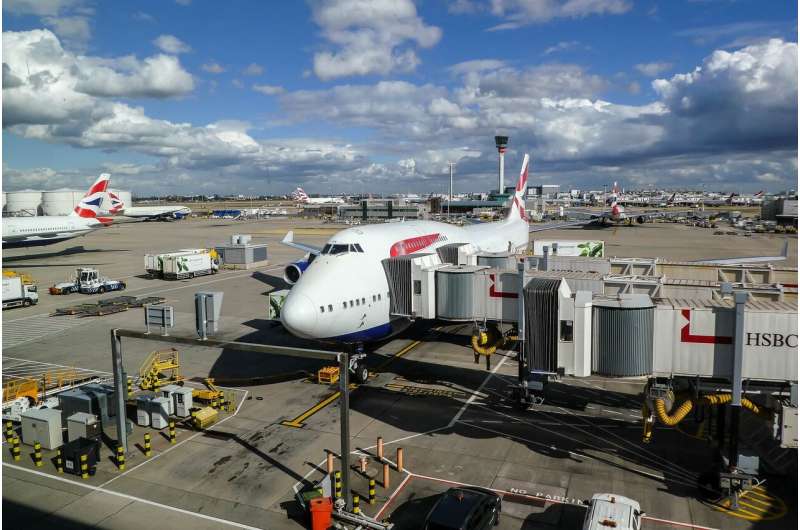Pollution from Heathrow detected in central London

In a study published in Environment International researchers from King's have, for the first time, measured ultrafine particles (UFP) in European cities and detected emissions from airports.
Many studies have examined and quantified the levels of larger particles (e.g.PM2.5 - <2.5μm or PM10 - <10μm), however very few have studied UFP (< 0.1 μm).
In this study, researchers identified, characterized and quantified the sources UFPs in four European cities (Barcelona, Helsinki, London, and Zurich) between 2007 and 2017. They measured particle and gaseous pollutants at different sites and used a statistical model to identify and quantify the contribution of the different sources of ultrafine particles.
They found that:
- London had the highest concentration of UFP compared to other cities.
- The greatest concentrations of the smallest particles (called nucleation particles) when the wind was blowing from the airport in all cities. This indicates that airports are a major UFP source and that these small particles can travel many kilometers.
- Traffic emissions contributed the most in all four cities ranging from 71% - 94%.
- Helsinki was the only city to demonstrate a biogenic source—when particles are formed from emissions from the forests in the region.
- The most common sources for pollution particles were traffic and photonucleation for all four cities. Photonucleation is the process of new particles forming from gases in the atmosphere enhanced by the sun's radiation.
- Photonucleation was most prevalent in cities with high solar radiation, such as Barcelona but it was much less in the other cities.
- No variation between seasons in London and Zurich however in Barcelona, photonucleation contributed significantly during the summer months.
Dr. Ioar Rivas, research fellow and author of the study said: "We expected traffic emissions to be an important source of ultrafine particles in cities but we now know that airport emissions, even if located at the outskirts of the city, can travel far enough and reach population on urban areas away from the airport".
Dr. Gary Fuller, senior lecturer in air pollution measurement, added: "Cities around Europe have policies to reduce airborne particle from the traffic that should also reduce people's exposure to ultrafine particles, but aircraft emissions are not being addressed in the same way".
The next steps in this research are to evaluate the effects of the different sources of ultrafine particles on mortality and hospital admissions.
More information: Ioar Rivas et al. Source apportionment of particle number size distribution in urban background and traffic stations in four European cities, Environment International (2019). DOI: 10.1016/j.envint.2019.105345
Journal information: Environment International
Provided by King's College London



















